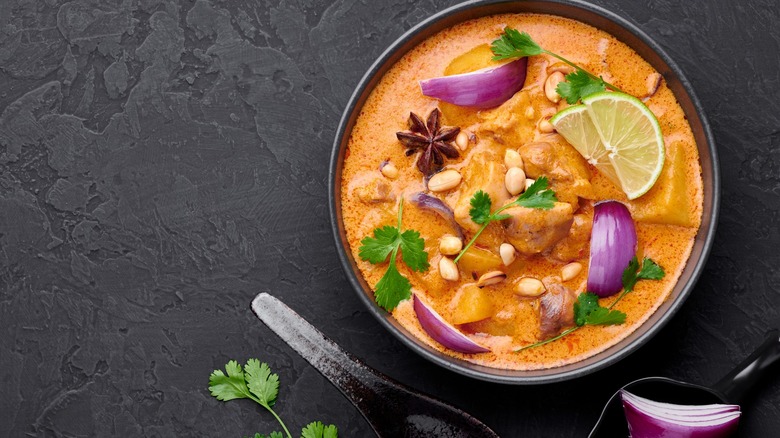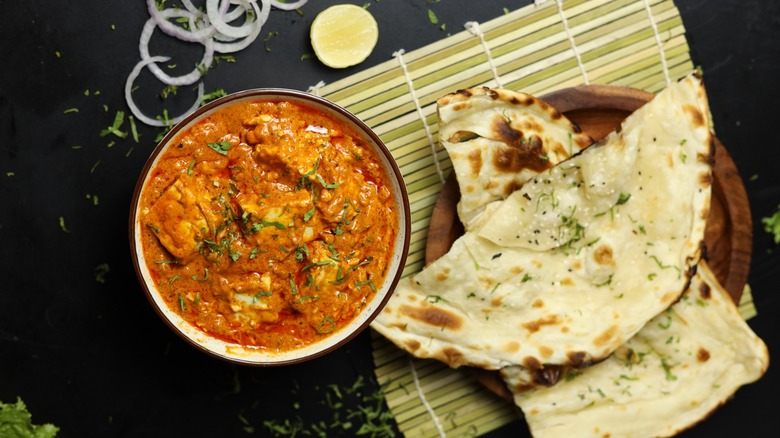A Bit Of Citrus Cuts Through Your Curry's Richness Like A Zesty Knife
Curry has as many variations as the countries and regions within those countries that make it. But whether it's an Indian spicy aloo curry, a Thai shrimp curry, or a veggie-packed Japanese curry, they all share the commonalities of being spicy, rich, and saucy. Curries are so belly-warming, hearty, and filling that some might find them a bit heavy with their thick sauces and chunky fibrous veggies. But not to worry, there's an easy time-honored solution present in many curry recipes that cuts right through that richness, allowing you to savor every last bite without feeling weighed down: Just add citrus.
This simple tip works whether the curry you're making hails from India, Thailand, or beyond. When it comes to the multi-layered spice of curry, there can be a risk of overwhelming all other components of the dish as well as your palate. Each bite — the same as the last, your tastebuds crying out for a break, a palate cleanser — something that allows you to taste this robust curry fresh all over again. You need acidity. Whether using citrus fruit, tomatoes, yogurt, or tamarind, what you're looking for is something that cuts through the thick flavor stranglehold to balance that overwhelming potency of strong flavors, while simultaneously adding a zesty vibrance that lends variation and eliminates monotony. Citrus fruits perhaps do this best, bringing a sunny, brightness to any curry along with fruity, tangy, and floral notes that only add further dimension to your dish.
How to improve your curry with citrus fruit
Many curry recipes call for citrus and there are a few ways to incorporate it into the dish. However, if your recipe does not specify its inclusion, there's no rule stating you can't add your own. Citrus fruits that are commonly used in curry include limes, lemons, oranges, and even grapefruits. (Tamarind, with its zippy tang, can also be used).
The most direct way to add citrus to your curry is freshly squeezed right on top just before the dish is served. But before you start squeezing, it's best to taste your curry first to determine if you think it would benefit from it and if so, to gauge how much you think it needs. It's all about personal flavor preference. To avoid overdoing it, start with a little bit, tasting and adjusting from there.
A second way to integrate citrus into your curry is in the sauce itself (a lot of recipes call for this). While you might not get the same vibrance as the first method, it will infuse the flavor evenly throughout the dish, adding dimension. Lastly, you can suffuse citrus into your dish via the rice. This works especially well with Thai curries — creamy coconut-lime rice anyone?
Of course, you can always be bold and use all three citrus-imbuing techniques for an extra zingy dish that will curry favor with even the most discerning of palates.

